Surviving World War III in Iran– Twilight: 2000
In the RPG by GDW released in 1984, Twilight: 2000, the action starts in Europe, specifically Poland. The players, members of the US Army’s 5th Mechanized Division, find themselves stranded in enemy territory when the last major offensive of World War III flounders and then implodes. The world inched across the line of nuclear holocaust. The American, Soviet, German, and Polish governments are hardly worthy of the name “government.”
The adventures and setting information that GDW published in subsequent releases favor heavily game play in Eastern Europe and then the war-shattered United States. While excursions to Greece and Norway are to be found, for the most part, players wander Poland, Czechoslovakia, and perhaps Ukraine in an effort to simply survive and find a way home — even if that is making a new home.
GDW rarely ventured beyond these spaces. Even Challenge, GDW’s house magazine, provided limited additional location information — looping in Albania, the Baltics, British Columbia, Canada, and Connecticut. Two notable supplements, David S. Adams’ East Africa/Kenya Sourcebook (an official supplement and canon) and Alf R. Bergesen’s The Korean Sourcebook take on other parts of the world. (The latter book, a fan-made supplement, had the official endorsement of Marc Miller.)
GDW itself, however, produced two notable supplements that extend the game’s setting beyond continental Europe and America: Survivor’s Guide to the United Kingdom and RDF Sourcebook. I will visit the UK supplement in a future. The RDF Sourcebook incorporates Iran and some of the wider Middle East into the Twilight: 2000 setting.
RDF stands for rapid deployment force. Per Wikipedia, this now inactive task force’s goal was to be a highly mobile force that could deploy to areas outside of Europe and Korea. It eventually was reorganized as United States Central Command, or CENTCOM — a term that is frequently used in the RDF Sourcebook.
When the original Twilight: 2000 game was published in 1984, the Soviet Union still existed, the Cold War was intense, and proxy wars in Latin America and Afghanistan raged. In Iran, the Islamic Republic established in 1979, the Ayatollah Khomeini still ruled an oil-rich land and was hostile to the United States. The Iran Hostage Crisis still lingered fresh in the minds of many.
The game postulates a series of events (the USSR and China begin a titanic war that ultimately triggers the broader global war). For Iran, it veers into an alternative future (at the time) beginning in 1988. In fact, the first section of the RDF Sourcebook provides a chronological history of the events in Iran leading up to 2000.
The Ayatollah passed away, leading to a less doctrinaire government in Iran called the Iran Nowin (New Iran). While ensuring that the Islamic Revolution proceeded forward, it altered the rhetoric toward the United States and ended the war with Iraq (historically, the Iran-Iraq War ended in 1988 after 8 bloody years of fighting). Meanwhile, the US pushed harder for peace treaties between Israel and other neighboring countries. The Camp David II accords established a non-territorial Palestinian state, re-validated the treaty between Israel and Egypt, and signed a treaty between Jordan and Israel.
Over the coming years, further treaties were signed with Israel by Kuwait, Saudi Arabia, and Oman. Meanwhile, Iraq (presumably still led by Saddam Hussein) and Syria verged on war. The Soviets decided the way to deal with this was to facilitate coups in both countries and ensure the establishment of communist ruling parties.
Soviet fears about US actions Iran and Pakistan — particularly as the Sino-Soviet War turned into a bloody slog — prompted them to bolster covert actions and support of communist parties in those countries. Of particular note was the Tudeh — who combined with various other groups — to provide mounting opposition to Iran Nowin and serve a the Soviet extension into Iranian territory. Meanwhile, a group of royalists sought to return the Iranian royal family to the throne. Going into 1996, the Middle East was in turmoil. Things between Syria and Israel heated up around the Golan Heights and Lebanon fell to a pro-Syrian coup. For the most part, the West watched — except for a couple of small but important actions. Essentially, America and its allies did not want to interrupt the flow of oil. The Americans, French, and Brits all established some level of military presence in the Persian Gulf. In 1996, these deployments, particularly the American, increased significantly.
The book provides significant additional text describing the progress of the war in the area. The essential facts are that the US and Britain provide token units initially, based out of Saudi Arabia. As the war escalates, they — particularly the US — commit more units to the area to counter Soviet strength. The front in Iran moves back and forth with Soviet punches, often slowed by stiff Iranian opposition, and then supplemented and pushed back with US support. Nonetheless, the Iran Nowin abandoned Tehran first for Esfahan and finally Shiraz. Meanwhile the Soviets had to deal with numerous mutinies in Turkmenistan and Iraq. When the nukes launched in the 1997, the Middle East did not feel the impact as much, though the devastation, break down in societies, and disappearance of central control made life much worse for the average citizen.
However, because the nuclear exchanges were more limited, World War III in Iran still has many characteristics of warfare prior to the nukes. The Soviet Union still fields and controls an army that has command and control and an ability to continue to fight the US military, mostly represented by elements of the 82nd Airborne, 1st Marine Division, and Special Forces units. Per the story of this first edition of Twilight: 2000, the US government split into acrimonious sides after the Soviet nuclear strike on Washington, D.C. The so-called CivGov and MilGov oppose each other in often violent ways. This, however, is not the case in the Middle East. There, the US military leader, General Samuel MacLean, and the Ambassador-at-Large to the Middle East, Garret Thayer, recognized they needed to work together to protect American lives and interests. In essence, both have defied their nominal leadership, though the state of both CivGov and MilGov means those powers have little opportunity to take corrective action—in other words, they have to worry about surviving and Iran is far away.
The Soviets, led by General Piotyr Suryakin, continue to be an effective, if battered fighting force. With little direction from Moscow, Suryakin is determined to ensure as cohesive of a fighting force as he can while still taking the battle to the Americans. An interesting aspect of the conflict prior to 2000 were the use of special forces groups by both sides to conduct assassinations along with fomenting guerrilla actions behind enemy lines.
The book covers the general geography of Iran while also covering Islam. For a book in the late 1980s, when Islam was little understood by the general public in the United States, that section reads as a thoughtful, condensed “summary” of Islam. While no one will walk away with much knowledge, they will have a bit more understanding, and Islam is not represented as a malevolent religion. The Iran Nowin did not attempt to dismantle the Islamic Republic of Khomeini, but it did temper its more extreme elements.
RDF Sourcebook contains numerous other details. Orders of battle for the opposing sides, which includes the French. In this setting’s history, France withdrew from NATO early in the war and has remained neutral in the conflict. Thus, they are one of the few nations in Europe to retain anything like a central government with power. Relations between France and the US are bad, though efforts have been underway in the Middle East to repair that. Even with that, France is not pro-Soviet and pursue their own interests in Iran.
Key NPCs — some of which players might meet and several which they are unlikely too — receive the standard short description along with motivations and key skills.
Given the more conventional state of the war in Iran, the supplement assumes the players are attached to military units with active command and control. Thus, it provides mission types with some ideas for gamemasters to use. These include conducting raids and ambushes, performing reconnaissance, and advising local forces. The supplement also includes additional character creation options for generating US Marines, Navy, and Air Force characters along with characters serving in numerous other local forces — the Iranian People’s Army, Kurdish forces, and the Israeli Defense Force. Given the French presence, options for being members of the French Foreign Legion and other conventional French forces are also included.
The book ends with numerous additions to the equipment and vehicle lists. The book is, in the end, an excellent resource for groups wanting to play in a region outside Europe and the US.
The adventure King’s Ransom was very much written with the RDF Sourcebook in mind. For it takes place in Iran. Essentially, the Iranian Crown Jewels were removed to Esfahan from Tehran with the Iran Nowin’s evacuation of the capital. As the government needed to retreat to Shiraz, they also wanted to take the crown jewels. The unit in charge of their removal timed it with the Soviet attack on Esfahan. They made the decision that they could not get to Shiraz and, thus, hid the jewels in an Armenian Catholic church in a suburb of Esfahan. The Iranian unit did not survive the siege and attack on Esfahan. Enter a Soviet KGB agents Kostenko and Zarudin, who happened upon the jewels while seeking cover during a guerrilla attack.
Written by Frank Frey and Lester Smith, King’s Ransom bears some resemblance to Frey’s The Black Madonna. (You can read Black Gate‘s coverage of The Black Madonna in my article Twilight: 2000‘s Polish Campaign: Part III.) Like The Black Madonna, the Iranian Crown Jewels have a cultural value that adds legitimacy to a group claiming to rule all of Iran while also being a potential source of money for less idealistic possessor’s the jewels. In fact, the jewels are more portable than a painting and can be divided and still retain value.
No Twilight: 2000 adventure would be compete without rumors and random encounters. These fall into the typical pattern. Some of the rumors and encounters have connections with the larger adventure plot. In particular, this adventure encourages GMs to conduct normal operations, such as raids or security operations, in the area. As part of those encounters, the GM can give them the rumors associated with the jewels. The authors provide one raid in particular on a Soviet signaling station near Esfahan. Interestingly, the players can choose to parachute in, helicopter in, or go by vehicle. (The US military in the Middle East has better access to avionic fuel and materiel — though not unlimited.)
Regardless of how the players get there (or whether they take the mission), they will encounter the Kostenko and Zarudin characters. In fact, they’ll find Kostenko dead from multiple gunshots and Zarudin wounded but alive. Zarudin will use his knowledge of the jewels to bargain for his life.
Perhaps more than any other adventure to date, what happens next is very much left in the players’ hands. Does Zarudin provide enough information to incline them to pursue the lead? If they tell their commanders, the US military will ask them to conduct a raid to secure the jewels for their Iranian allies. Even what the players do with the jewels is up to them. Sell them all? Sell a few? Turn them over as good honest citizens? All have consequences — some good, some bad. King’s Ransom reinforces the sandbox, player-controlled story that Twilight: 2000 has always been so good at.
Sadly, King’s Ransom is the only official adventure set in the Middle East. In fact, for the first edition of Twilight: 2000, it is the only adventure outside of Europe and the US. That said, armed with the RDF Sourcebook and the voluminous extra information in King’s Ransom, any gaming group will be able to find hours of play and adventure in Iran.
You can get the entire digital library of the first edition of Twilight: 2000 from Far Future Enterprises.
Our previous coverage of GDW’s Twilight: 2000 includes:
Exploring Post-Apocalyptic Poland in Twilight: 2000
Twilight: 2000 — Roleplaying in a Post-Nuclear Holocaust World
Twilight: 2000‘s Polish Campaign, Part I
Twilight: 2000‘s Polish Campaign, Part II
Twilight: 2000‘s Polish Campaign: Part III
Going Home Isn’t All it’s Cracked Up to Be: Twilight: 2000’s American Campaign, Part I
From the Mountains to the Oceans: Twilight 2000‘s American Campaign, Part II
Reckoning: Twilight: 2000‘s American Campaign, Part III
Cruising in a Submarine: Twilight: 2000‘s The Last Submarine Campaign
Back to Where It All Began—Twilight: 2000’s Return to Europe Campaign
Patrick Kanouse encountered Traveller and Star Frontiers in the early 1980s, which he then subjected his brother to many games of. Outside of RPGs, he is a fiction writer, avid tabletop roleplaying game master, and new convert to war gaming. His last post for Black Gate was The Cold and Enroaching Doom of Death in Space. You can follow him and his brother at Two Brothers Gaming as they play any number of RPGs. Twitter: @twobrothersgam8. Facebook: Two Brothers Gaming.
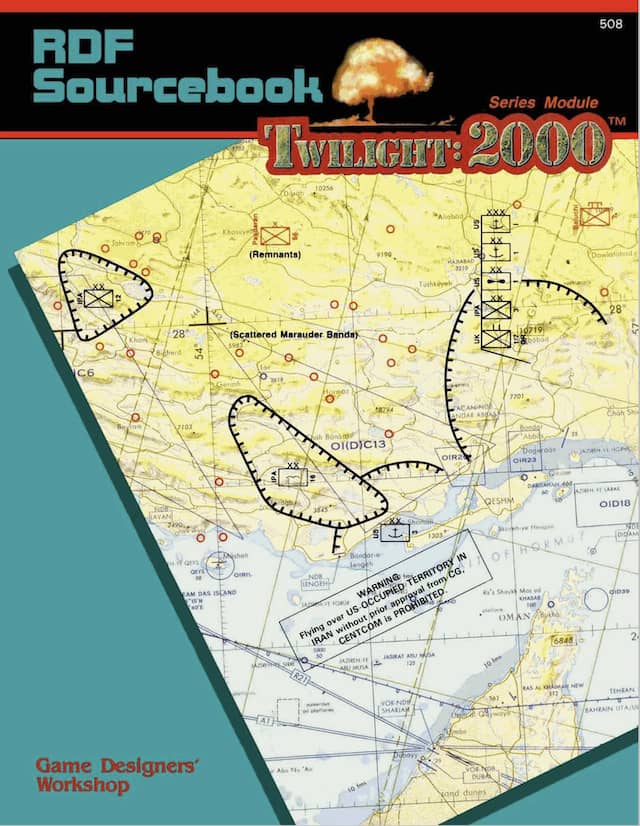

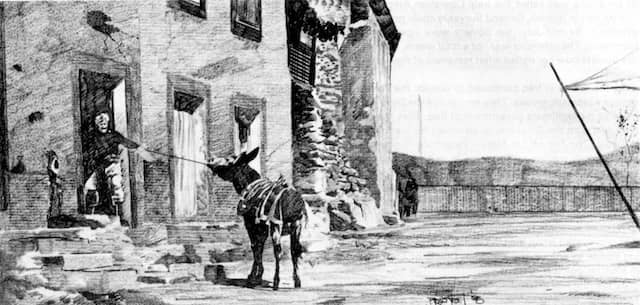
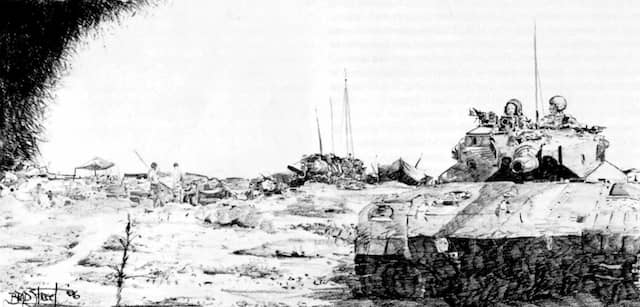
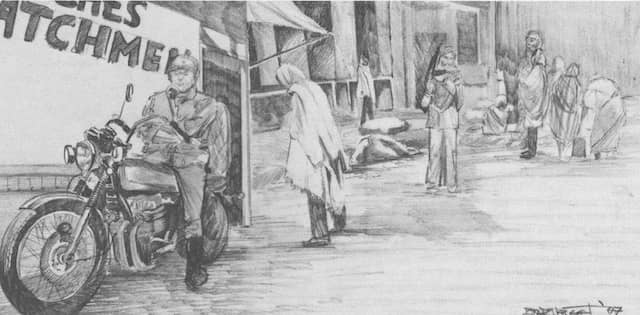
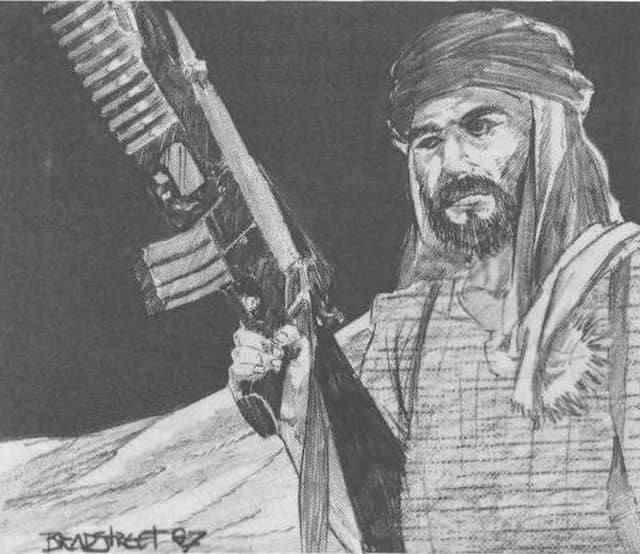
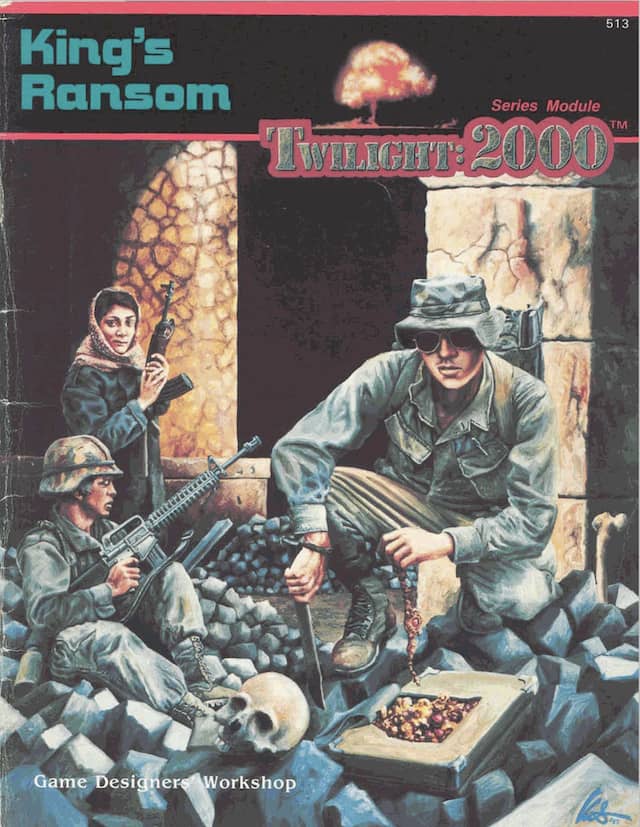
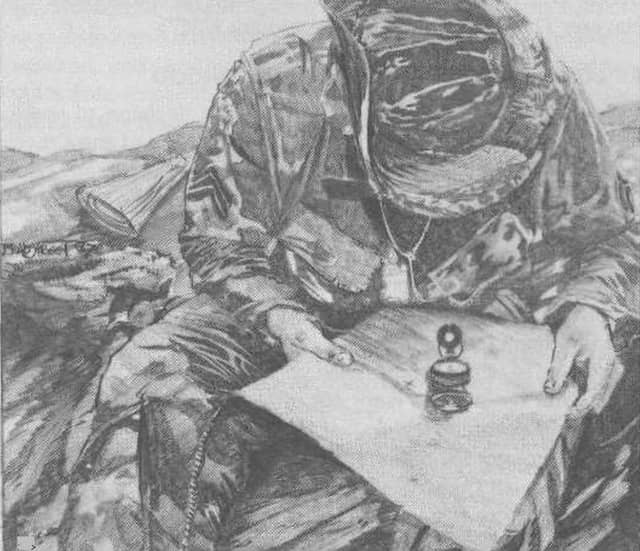
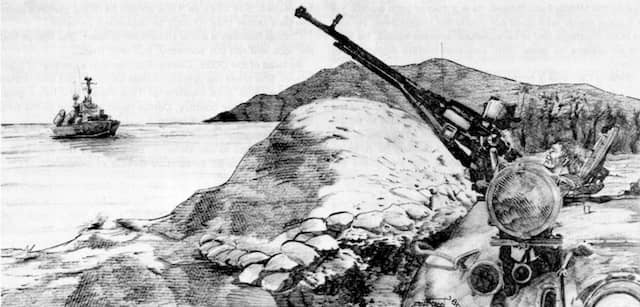
Thanks again for spreading the T2k word! These two are books that my group hardly used back in the day, except for some of the rules for making characters and a little of the gear.
I agree that King’s Ransom’s core as an adventure is similar to Black Madonna: a political tool that the player characters can’t really use, a lot of factions that can, and a sandbox for the PCs to act in.
Lee thanks for reading and commenting! I never really used these either back in the day–though I dreamed of doing so. Perhaps I will adapt for the newest edition…..
Saw your mention of the East Africa Sourcebook that I am the author of. That module is considered official V2.2 canon by Marc Miller. So its not fan-made, its an actual official product for the V2.2 version of T2K
David,
Thanks for the clarification. Text adjusted.